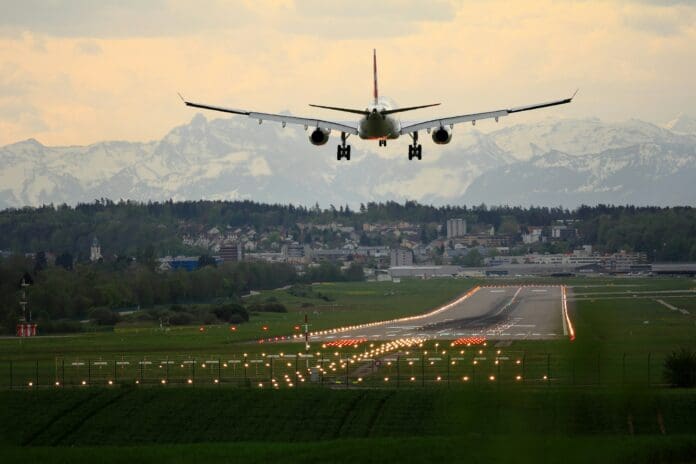This post is also available in:
 עברית (Hebrew)
עברית (Hebrew)
In a groundbreaking study, an international team of researchers has demonstrated how artificial intelligence (AI) could play a pivotal role in preventing dangerous altitude drops caused by turbulence during flight. The research, published in Nature Communications, focuses on the potential of machine learning to improve airflow management over aircraft wings, enhancing safety and efficiency.
The study, led by experts from KTH Royal Institute of Technology in Sweden and the Barcelona Supercomputing Center, tested an AI system integrated with deep reinforcement learning (DLR). This system adapts its control strategy based on past experiences, making it highly effective at optimizing airflow and mitigating turbulence. According to TechXplore, the AI’s primary target is a specific aerodynamic hazard called flow detachment—a phenomenon where airflow breaks away from the wing’s surface, creating dangerous swirling air, known as turbulent separation bubbles.
Flow detachment is a critical issue for aircraft stability, explained Ricardo Vinuesa, a fluid dynamics and machine learning researcher at KTH, according to TechXplore. When the airflow over the wing surface ‘detaches’, it leads to a loss of lift and increased drag, which can result in a stall, making the aircraft harder to control.
When tested using synthetic jets, the study shows that AI significantly reduced these turbulent separation bubbles by up to 9%, enhancing aircraft control during turbulence. Interestingly, the study challenges previous assumptions in aerospace engineering. Traditionally, it was believed that these air pulses should be activated at regular intervals to reduce turbulence. However, the AI-controlled system proved far more effective, reducing separation bubbles by 9% compared to just 6.8% with periodic pulses.
The results of this study underscore the transformative potential of AI in the future of aviation. By harnessing machine learning to optimize airflow management, researchers are paving the way for safer, more efficient flights. As AI continues to evolve, its integration into aircraft systems could lead to better turbulence control, enhanced performance, and a significant reduction in fuel consumption, making air travel not only safer but also more sustainable in the years to come.


























